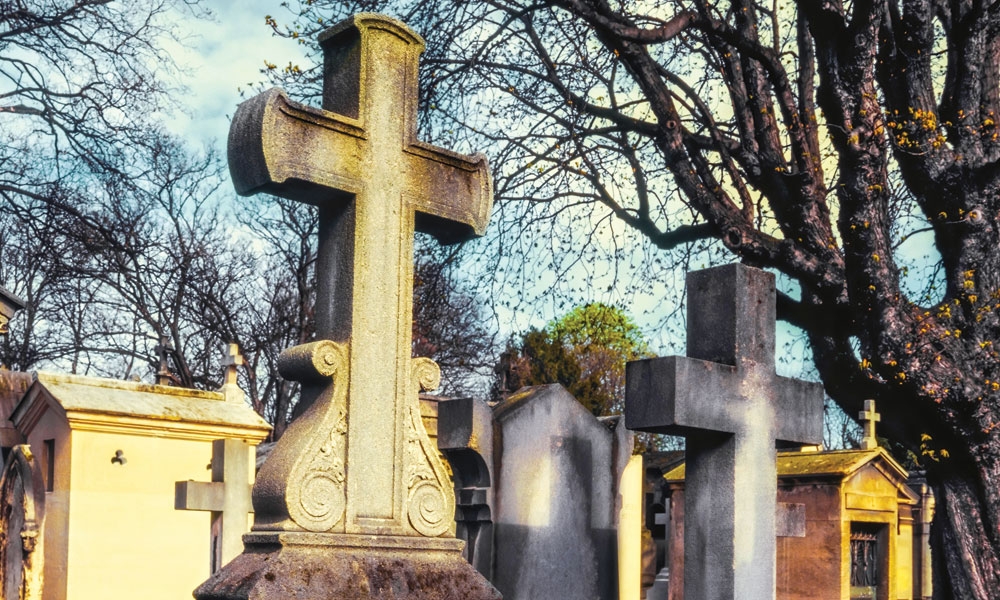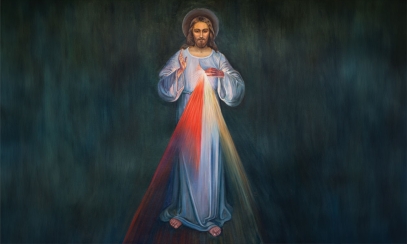
Grave matter: How to treat the dead with dignity
Getting your Trinity Audio player ready...
It’s October, so of course, Halloween is everywhere. Maybe this makes me sound curmudgeonly, but as a kid, I don’t remember the month-long celebration, nor the level of grotesqueness that we now seem to descend into every year. Of course, for whatever reason, we humans have a long and varied history of fascination with the frightening, the obscene, the repulsive, and the bizarre. Maybe it’s a way we deal with the mystery surrounding death and the fear of the day we all must face it.
It’s October, so of course, Halloween is everywhere. Maybe this makes me sound curmudgeonly, but as a kid, I don’t remember the month-long celebration, nor the level of grotesqueness that we now seem to descend into every year. Of course, for whatever reason, we humans have a long and varied history of fascination with the frightening, the obscene, the repulsive, and the bizarre. Maybe it’s a way we deal with the mystery surrounding death and the fear of the day we all must face it.
In the early 2010s, I was captivated by the hit television show “The Walking Dead.” I not only watched the show itself, but I watched the post-episode talk show that discussed the plot development of the latest installment. I discussed with my friends our impressions of what was progressing and prognosticated with them about where the show was taking us. Admittedly, there was a certain vulgar delight in the creative ways the show depicted various forms of bodily decay on the zombies, but I was also fascinated by the idea that literally every single person was an unwitting victim of the pandemic, and it didn’t matter who you were: when you died, you became a “walker.” As time went on, we all realized, it was the living characters in the show, and not the zombies, who were the walking dead!
It’s interesting that in this month of the ghoulish, we have the feast day (Oct. 14) of the patron saint of cemetery workers, Pope St. Callistus I. Pope Callistus originally began life as a slave and he must have been a decent one, because his master put him in charge of managing the bank he owned! Ultimately, however, the bank failed because of some bad investments and Callistus fled out of fear, was later captured, and was sentenced to work in the mines. After he was released, he found himself in the service of Pope Victor. Later on, another pope, St. Zephyrinus, ordained him a deacon and gave him the great responsibility of caring for the Christian cemetery on the Appian Way. This was a very great responsibility, as this plot of land is known to be the very first land the Church ever owned. To this day, that cemetery is known as the Catacomb of St. Callistus and notable Christians were buried there, including St. Cecilia (patron saint of musicians) and nine popes.
How intriguing is it that the first property the Church owned was a cemetery? Before she built her great cathedrals, hospitals, or schools, the Church bought land and made places for the dead. The care for the dead goes to the very roots of Christianity and in the Gospels we see the care given to the body of the Lord during his own burial. Burying the dead is considered one of the seven corporal works of mercy. The Catechism of the Catholic Church says, “The bodies of the dead must be treated with respect and charity, in faith and hope of the Resurrection. The burial of the dead is a corporal work of mercy; it honors the children of God, who are temples of the Holy Spirit.” (2300) For those Christians who have been baptized and/or received Holy Communion, the body has been a dwelling of God himself and thus takes on a certain holiness. Treating it with care and respect after death is a recognition of the fact this particular body is a temple of the Holy Spirit and deserves to be treated as such.
Of course, November is known as the month of the dead, but it is striking that the feast day of the man who established the first Christian cemetery and was its first caretaker takes place during the month that has become so focused on the grotesque side of death. Ghosts, ghouls, skeletons, and zombies stimulate our curiosity and there’s nothing necessarily sinful about that. However, the Christian vision is to treat the dead with respect, charity, and tenderness. Wouldn’t it be helpful to balance the first with the second?
Here’s my challenge, even though it’s October and not yet the official month of the dead, November: Visit a cemetery sometime this month in honor of Pope Callistus. Read the headstones and take a moment to pray for the people buried beneath your feet. Take the family to visit the graves of loved ones and pray for them as a family. If you’re really up for it, drive down to St. Joseph Shrine in Brooklyn. We have wonderful cemeteries in our diocese, but for my money, St. Joseph Shrine’s is the most beautiful.
Pope St. Callistus I, pray for us!
Richard Budd is the Director of Marriage and Family Life Ministry for the Diocese of Lansing.



